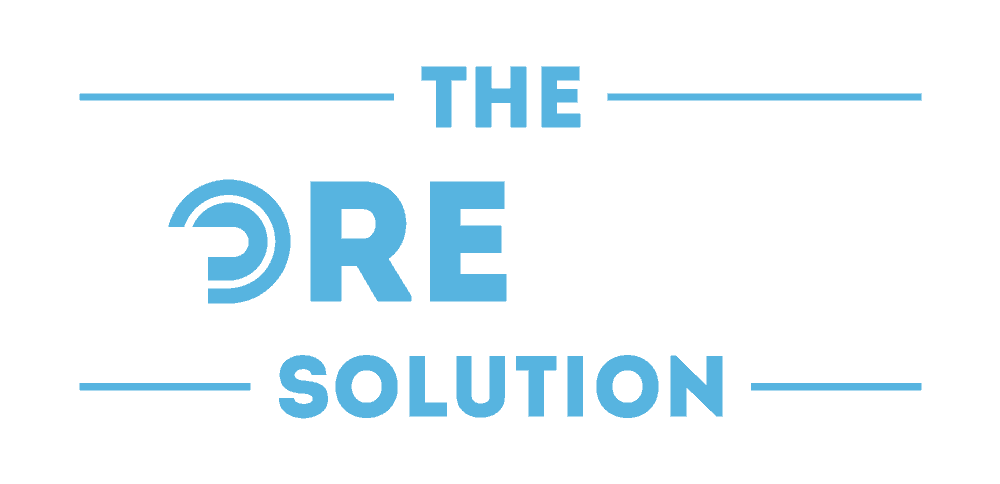7 Ways to Avoid Burnout & Reclaim Your Joy
How to avoid burnout in a world that never stops?
Start by recognizing just how serious the issue has become: according to a 2022 Gallup study, 76% of employees experience burnout at least sometimes, and nearly one in three say they feel burned out “very often” or “always.” And that’s just at work—students, caregivers, volunteers, and creatives are all feeling the weight of relentless demands and too little rest. Burnout isn’t just about being tired; it’s a full-body shutdown that affects your physical health, mental clarity, and emotional well-being.
This guide unpacks the reality of burnout—what it is, how it shows up, what causes it, and most importantly, how to prevent it before you hit a wall. Whether you’re balancing deadlines, diapers, or both, this is your permission slip to slow down, take inventory, and build a healthier, more sustainable rhythm of life.
What is Burnout?
Picture this: You’re an overworked professional who hasn’t had a weekend off in months. Or maybe you’re a college student running on nothing but caffeine and looming deadlines. You could be a devoted caregiver, awake before dawn and tending to others well past midnight. If you’ve ever felt a bone-deep exhaustion that no amount of sleep seems to fix, you may be experiencing burnout – a state of physical, mental, and emotional depletion that goes far beyond ordinary fatigue.
So, what exactly is burnout? It’s more than just a bad day or feeling tired from a busy week. Burnout is the result of chronic stress over an extended period – when you’ve been stretched beyond your limits for too long without sufficient rest or support. The World Health Organization officially defines burnout as a syndrome resulting from “chronic workplace stress that has not been successfully managed,” marked by three dimensions: overwhelming exhaustion, growing cynicism or detachment, and a sense of inefficacy or lack of accomplishment. In simple terms, you feel used up: no energy, no enthusiasm, and no confidence that you’re doing anything that matters.
While this definition focuses on the workplace, we now understand that burnout can arise in any role or setting that overwhelms us – from academic burnout in students to compassion fatigue in caregivers. Any prolonged, intense stress without relief can push a person into burnout. In recent years, burnout has become alarmingly common. One Gallup survey found that 76% of employees experience burnout at least sometimes, and 28% feel burned out “very often” or “always” at work. And that’s just in the workplace – countless students, parents, volunteers, and healthcare workers are running on empty as well. Burnout isn’t a personal failure or a sign of weakness; it’s a signal that your mind and body are overextended and overwhelmed.
To understand how serious burnout can be, consider this real-life story: Arianna Huffington, a highly successful media executive, was once working so relentlessly that she collapsed at her desk from exhaustion. She hit her head, broke her cheekbone, and needed stitches near her eye. It was a wake-up call that even the toughest and most passionate among us have limits. Burnout can quite literally knock us off our feet. It’s a state of emergency for our well-being, and it deserves compassionate attention.

What Are The Signs of Burnout?
Burnout often creeps up on us. Its warning signs can start subtly and then intensify over time. Being able to recognize these signs – in yourself or someone you care about – is crucial. Here are some common signs of burnout to look out for:
Chronic Exhaustion: This is not just “being tired.” It’s a profound fatigue that feels never-ending. You’re drained physically and emotionally, as if you have nothing left to give. Getting out of bed feels daunting, and even after rest, you still feel exhausted. Often, this burnout fatigue comes with physical symptoms – you might have frequent headaches or stomach aches or find you’re getting sick more often than usual.
Cynicism and Detachment: Burnout can transform your mindset in painful ways. You might develop a negative, cynical attitude toward your work or responsibilities and start to feel detached from things you used to care about. This increased mental distance and cynicism is a hallmark of burnout. You may even notice you have a shorter fuse and catch yourself snapping at friends or family for small reasons.
Reduced Performance and Efficacy: Another telltale sign of burnout is a sharp decline in your ability to function as you normally would. You might struggle to concentrate or find it hard to be productive, even on tasks that used to be routine. With burnout, it often feels like despite working harder, you’re accomplishing less and less.
Emotional Overwhelm and Other Symptoms: Burnout can also manifest in your mood and overall behavior. You might feel hopeless, trapped, or emotionally flat. Changes in sleep or appetite, irritability, and withdrawal from others are common. If you’re not feeling like yourself lately – more disillusioned and physically unwell – it may be burnout waving a red flag.
Burnout often feels like you’re a candle burning at both ends, or a battery that’s dangerously low on charge. If you recognize several of these signs in yourself, take them seriously. They are your mind and body’s way of saying, “I’m overloaded.” The good news is that by catching these signs early, you can start making changes to slow down and seek support before a breakdown occurs.
Causes of Burnout
What leads someone to burn out? Usually, it’s not one single thing, but a combination of factors that build up over time. Burnout happens when the demands on you chronically exceed the resources (like time, energy, support) you have. Here are some common causes and contributors to burnout:
- Overwhelming Workload or Responsibility: Too much on your plate for too long will set the stage for burnout. This could mean endless overtime at a job, taking on extra shifts, or handling an unmanageable number of projects.
- Lack of Control and Support: Feeling powerless or alone in your efforts greatly amplifies stress. If you have no control over your situation – for instance, zero say in your schedule, or constantly changing priorities that leave you scrambling – you’re more likely to burn out.
- Imbalance and Loss of Work-Life Balance: When life falls out of balance, burnout can creep in. If all you do is work or care for others, and you never have time to recharge or focus on your own needs, you’re on a collision course with burnout. We often use the metaphor of a seesaw when talking about work-life balance – if all the weight is on one side (all work, all responsibility) and nothing is on the other (rest, play, self-care), the balance tips and eventually crashes.
- High Personal Expectations and Perfectionism: Sometimes the pressure comes from within. People who are perfectionists, over-achievers, or who tie their self-worth to their performance are especially prone to burnout. You may take on extra tasks because you don’t want to let anyone down, or refuse to delegate because you feel you must do it all perfectly yourself.
- Lack of Reward or Recognition: Pouring your heart and energy out and feeling like it doesn’t matter can quickly lead to cynicism and burnout. If you work hard and never get a thank-you or any sense of accomplishment, you start to wonder, “Why bother?” Caregivers might rarely see a patient’s condition improve, or a teacher might feel their efforts aren’t making a difference for struggling students. When there’s a big gap between effort and reward – whether the reward is external (praise, pay, grades) or internal (personal satisfaction, seeing progress) – motivation dries up. Over time, that demoralization can turn into full-on burnout. We all need to feel that what we do has meaning or at least that we’re appreciated. Without those, the days blur together in a grind.
Preventative Strategies: How to Avoid Burnout
The old saying “An ounce of prevention is worth a pound of cure” really applies to burnout. It’s far better to take care of yourself along the way than to hit rock bottom and have to rebuild from burnout. Avoiding burnout isn’t about being weak; it’s about being wise and proactive in managing your life and stress. Here are some preventative strategies to help keep your flame from burning out:
- Protect Your Work-Life Balance (the Seesaw Metaphor): One of the most powerful ways to prevent burnout is to maintain balance between your responsibilities and the rest of your life. Imagine your life as a seesaw: work, school, or caregiving duties on one side, and rest, hobbies, and personal time on the other. If one side gets too heavy, the seesaw tips. Plan your weeks like you’d pack a balanced diet – include work and downtime. Schedule breaks and leisure activities the same way you schedule meetings or classes.
- Learn to Say “No” and Set Boundaries: One of the hardest but most liberating things you can do to prevent burnout is to set clear boundaries. If you routinely take on more than you can handle, burnout will find you. Protect your personal time and energy. This might mean not checking work emails after 7 PM, or telling your professor you can’t take on an extra project, or letting family know that you need an hour to yourself each evening. “No” can be a compassionate word – it allows you to show up fully for the commitments you have made. Practice saying no or asking for extensions when your plate is full.
- Build a Support System: You are not meant to do it all alone. Isolation feeds burnout, so make sure you have people to lean on. Cultivate a support network of friends, family, classmates, or colleagues who you can talk to and who can encourage you. Sometimes just venting about your day to a trusted friend can release a lot of pressure. Other times, you might need practical help – like asking a co-worker to assist on a project, or hiring a babysitter for an afternoon, or coordinating with a sibling to share caregiving duties.
- Prioritize Self-Care (Sleep, Nutrition, Exercise): Taking care of your basic physical needs is non-negotiable in avoiding burnout. It sounds obvious, but when life gets busy, sleep, healthy eating, and exercise are often the first things to go – and that’s a recipe for burnout. Make sleep a priority; most adults need around 7-8 hours. Similarly, fuel yourself with food that gives you steady energy – skipping meals or living on junk food can make you feel sluggish and more stressed. Aim to move your body regularly in ways you enjoy. Exercise is a proven mood lifter and stress reducer; even a 10-minute walk can boost your mood for several hours webmd.com.
- Take Regular Breaks and Time Off: In our go-go-go culture, many people feel guilty taking breaks, but the human body and mind are not machines. We need downtime to recharge. Make it a habit to take short breaks throughout your day – step away from your desk, stretch, or do a brief breathing exercise to reset your mind.
- Mindfulness and Mini Recharge Moments: Incorporating stress-reduction techniques into your routine can fortify you against burnout. Practices like mindfulness meditation, deep breathing exercises, yoga, or journaling can help you process stress and emotions in real time, so they don’t accumulate as much. Even a simple habit like ending each day by writing down three things you’re grateful for can shift your focus toward the positive and build resilience.
- Keep Perspective and Purpose: Finally, one more preventive strategy is to nurture a healthy perspective about work and life. Burnout can sneak up when we start to feel like everything depends on us or that we must sacrifice ourselves for our work or others. Remind yourself that you are more than your job or role. Give yourself permission to be a human being, not a human doing. It helps to have interests and identities outside of work or caregiving – whether that’s being a runner, an artist, a gamer, a friend, a parent, or anything that matters to you.
By implementing these strategies – balancing your life, setting boundaries, seeking support, caring for your health, taking breaks, and keeping a grounded perspective – you build a kind of armor against burnout. It doesn’t mean you’ll never feel stress or fatigue, but it means you’re far less likely to get to that breaking point. And if stress does start piling up, you’ll have tools to address it before it overwhelms you. Think of it as tending to a garden: pull out the weeds of overcommitment, water yourself with rest and joy, and you’ll grow much more resilient in the face of life’s challenges.

Healing from Burnout: Recovering and Finding Renewal
What if you’re already burned out? Maybe you’re reading this and thinking, “This is me. I’m at the end of my rope right now.” First, take a deep breath – you are not alone, and there is a way forward. Burnout is not a permanent state. It’s possible to come back from burnout and feel like yourself again. Healing from burnout takes time and deliberate effort, but it can also be a profoundly positive journey of learning to care for yourself. Here are some healing practices and steps to help you recover:
- Acknowledge What You’re Feeling (You’re Not “Crazy” or “Weak”): The very first step in healing is to recognize and admit that you are burned out. Allow yourself to name it and understand that it’s a legitimate condition — not just “laziness” or a personal failing. Burnout can cloud judgment; you might have been telling yourself to “just push through it.” Instead, pause and acknowledge that you’re dealing with something real and serious.
- Seek Support – Don’t Go It Alone: Recovering from burnout is hard to do in isolation. Just as social support helps prevent burnout, it’s crucial in healing from it. Reach out for help in whatever way makes sense for you. This could mean talking to a therapist or counselor, especially if you’re experiencing depression, anxiety, or hopelessness (common companions to burnout).
- Prioritize Rest and Recovery Time: If you’re burned out, the most urgent prescription is rest. This can feel difficult if you’re used to being constantly busy, but it is non-negotiable. You need to give your body and mind a chance to replenish.
- Reflect and Realign Your Life (Making Meaningful Changes): As your energy begins to return, it’s important to look back and understand how you got burned out – not to blame yourself, but to learn what needs to change. Burnout is often a sign that something in our life is out of alignment.
- Re-engage with Joy and Purpose (Gradually): As you heal and make changes, you’ll start to feel your spark returning. This is the time to gently reintroduce the things that light you up inside. Burnout often makes life feel grey and joyless; part of recovery is remembering what joy feels like and giving yourself permission to pursue it. Re-engage with hobbies and activities that you love or that intrigue you.
- Be Patient and Self-Compassionate: Finally, as you go through healing, treat yourself with extraordinary kindness. Recovery from burnout can take weeks or months; you may have some days where you feel energetic and optimistic and others where the exhaustion and blues come back. That’s normal – healing is not linear. Don’t berate yourself for not bouncing back faster, and don’t compare yourself to others. You are rebuilding your strength.
Healing from burnout is absolutely possible.
Many people emerge from burnout with a clearer sense of what truly matters. Through the recovery process, they learn to listen to their limits, prioritize rest, and build lives that are rooted in balance—not just busyness. Healing from burnout isn’t instant, but it is possible. It starts with acknowledging what you’re feeling and giving yourself permission to slow down.
Over time, with rest, support, and intentional changes, your energy and purpose can return. Think of it as a reset—an invitation to rebuild with more compassion for yourself and more clarity about your needs. Whether you’re currently in the thick of burnout or hoping to prevent it, the path forward includes both small habits and big mindset shifts.
If this article has blessed or inspired you, please consider donating or shopping at our online store. Thank you for your support. God Bless.




